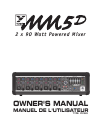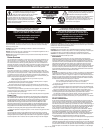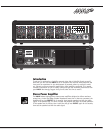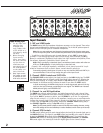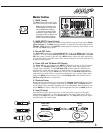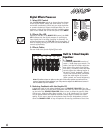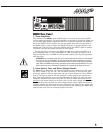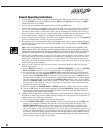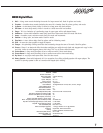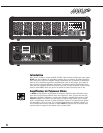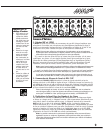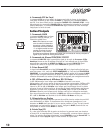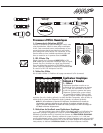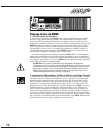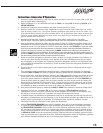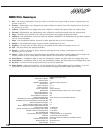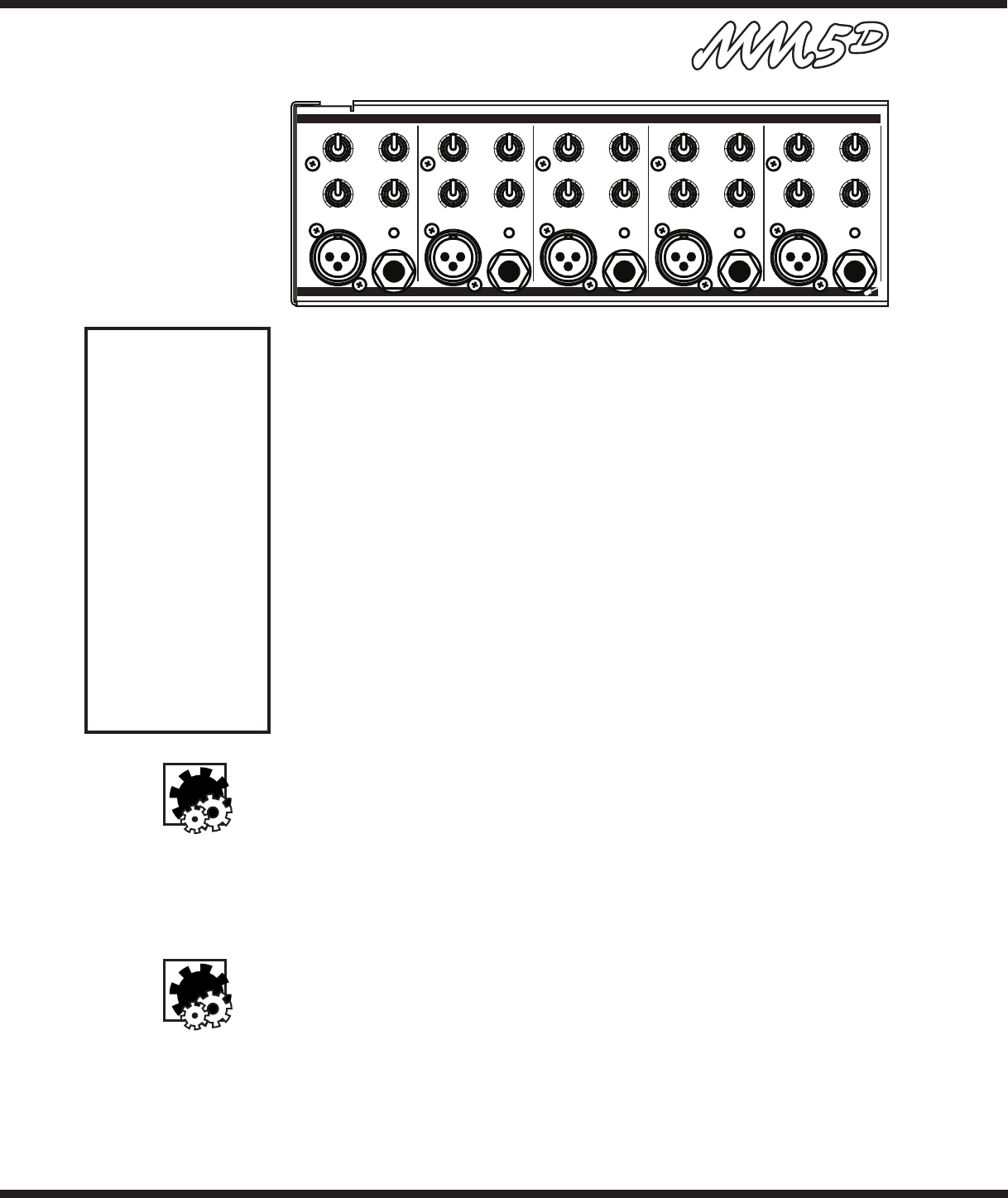
2
Input Channels
1. MIC and LINE Inputs
The MM5D features XLR low-impedance microphone connectors on the channels. These micro-
phone inputs are balanced for maximum noise suppression. The 24 Volt DC phantom power is
present on all 5 XLR input jacks for condenser microphones.
Note: You can use condenser and dynamic microphones with the phantom power pres-
ent on the input XLR jacks. It will not affect the performance of the dynamic microphones.
In addition to the XLR inputs, each channel features ¼-inch LINE in phone jacks.
Channels 1-4 are balanced line-level inputs and will accept either balanced (Tip/Ring/
Sleeve) or unbalanced (Tip/Sleeve) input cables from high impedance microphones, mixer
line outputs, keyboards, synthesizers, electric pianos etc.
Note: When connecting a balanced signal, use balanced patch cables with either an
XLR or a Tip/Ring/Sleeve ¼-inch phone plug on the mixer end.
Channel 5 has a very high impedance, unbalanced ¼-inch phone input which is opti-
mized for instruments such as electric basses, acoustic electric guitars etc.
Connecting signals to both types of inputs on any one channel (MIC and LINE in) is
not recommended. To do so may change the gain of the input circuit.
2. Channel LEVEL Controls and CLIP LEDs
The CHANNEL LEVEL control adjusts the signal level sent to the MAIN mixing bus. The CLIP
LED will illuminate when the channel’s overall signal level in that channel is 3 dB below the
onset of actual clipping. As a result, small amounts of clip LED activity is acceptable, how-
ever frequent or continuous activity indicates the need to turn down the LEVEL control.
In audio terminology, the MAIN mixing bus is an audio signal path where all the sig-
nals from the input channels are blended into one signal. The MM5D has 2 busses:
MAIN (left and right), and RECORD OUT.
3. Channel Lo, and Hi Equalization
The MM5D tone controls adjust the bass, and treble frequencies for each channel inde-
pendently. Center frequencies have been carefully selected to help achieve the best qual-
ity of sound. BASS is centered on 80 Hz, and the TREBLE is at 12 kHz. The adjustment
range for each control is +/- 15 dB. As with equalizers, boosting one or more frequencies
increase the channel’s level. If the channel is already at a high level, clipping may occur,
in which case the clip LED will illuminate. Reduce the CHANNEL LEVEL setting and/or
the CHANNEL Equalizer setting if clip LED activity is excessive.
Note: The EQ center position reflects a neutral or flat EQ control setting; however, turning
down EQ settings can be used effectively to reduce feedback, and/or clean up the sound).
4. Channel EFX Controls
The EFX control (effects send) for each channel adjusts the level of the channel signal sent to
the MM5D effects bus. This signal is post-LEVEL control and post-EQ, so the sound is affected
by both the CHANNEL EQ controls and the CHANNEL LEVEL control. The signal from the
CHANNEL EFX controls is internally routed to the Digital Effects Processor. The CHANNEL
EFX control adjusts the intensity of the built-in digital effects for the channel’s output.
0
5
28
7
6
4
3
91
10
010
0
5
28
7
6
4
3
91
10
010
0
5
28
7
6
4
3
91
10
010
0
5
28
7
6
4
3
91
10
010
-15 +15
dB
-15 +15
dB
-15 +15
dB
-15 +15
dB
-15 +15
dB
-15 +15
dB
-15 +15
dB
-15 +15
dB
-15 +15
dB
-15 +15
dB
0
5
28
7
6
4
3
91
10
010
Bass
Treble
LEVEL
EFX
Mic
Line
clip
1
Bass
Treble
LEVEL
EFX
Mic
Line
clip
2
Bass
Treble
LEVEL
EFX
Mic
Line
clip
3
Bass
Treble
LEVEL
EFX
Mic
Line
clip
4
Bass
Treble
LEVEL
EFX
Mic
Line /
Instrument
clip
5
Hi-Z
Input Wiring tips:
1. For all input con-
nectivity use
shielded wire
only. Cables with
a foil shield or a
high-density braid
are best.
2. When changing
input connec-
tions, turn down
the level controls
on the mixer to
eliminate pops
and thumps out of
the loudspeakers
as the cable con-
tacts the mixer.
3. Keep input connec-
tion cables as short
as possible to mini-
mize noise and hum.



